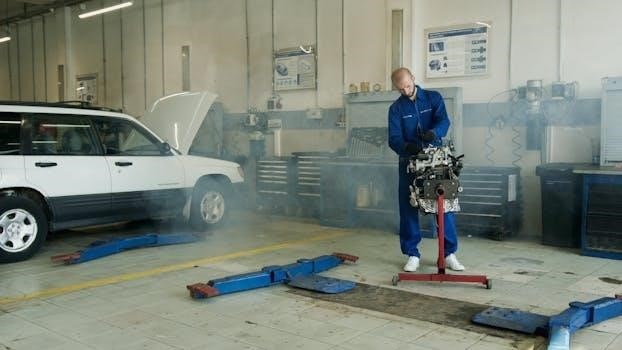
Manual Check⁚ An Overview

Manual checks are physical documents‚ prepared outside of automated systems‚ often used for immediate payments to suppliers or for one-time vendors․ These checks are recorded and accounted for separately․
Definition of a Manual Check
A manual check is fundamentally a payment instrument that is prepared and issued outside the conventional automated systems․ It is a physical‚ hand-written check‚ as opposed to a computer-generated one‚ utilized when the standard processes for creating payments aren’t suitable or available․ This type of check bypasses the usual automated check generation functionality‚ requiring manual preparation and record-keeping․ These checks are often employed in situations demanding immediate payment‚ such as when a supplier needs to be paid right away or when dealing with a one-time vendor․ They differ significantly from automated checks‚ which are produced by a computer system and are usually part of a regular payroll or accounts payable process․ The preparation of a manual check is a more hands-on process‚ requiring careful attention to detail to ensure all information is accurate and complies with the organization’s financial protocols․ Typically‚ the system doesn’t generate a manual check automatically; it’s a deliberate action taken when the standard automated method isn’t feasible․
Purpose of Manual Checks
The primary purpose of manual checks is to facilitate payments in situations where automated systems are impractical or unavailable․ They serve as a necessary alternative when an immediate payment is required‚ often for vendors who cannot wait for a standard processing cycle․ Manual checks are also used to make payments to employees outside of the regular payroll system‚ such as for wages or gifts that need to be issued quickly․ This method allows for more flexibility in handling urgent financial transactions‚ especially when dealing with one-time suppliers or unique circumstances that cannot be accommodated by the standard payment procedures․ Furthermore‚ manual checks provide a means of payment when a business needs a portable way to keep track of transactions․ They allow businesses to make payments even when they are not at a computer or have access to their accounting software․ The manual check serves as a crucial tool for maintaining financial operations in real-time‚ ensuring that immediate payment needs are met without the delays that automated systems may impose․

Manual Checks in Different Contexts
Manual checks are utilized in various settings‚ including payroll for immediate payments‚ supplier transactions for one-time needs‚ and in banking for non-standard processes․
Manual Checks in Payroll
Manual checks in payroll are issued outside the regular payroll system‚ often when an employee needs immediate payment․ This could be for various reasons‚ such as a missed regular pay cycle‚ a final payment‚ or a special bonus․ Unlike automated payroll processes‚ manual checks require a calculation of withholding and deductions‚ which must be done either on paper or using a printed screen․ The amounts are then copied onto a physical check․ It is very important to note that using manual checks is not a best practice and should be avoided if possible․ Employers should ideally route all payments through the system to ensure proper accounting and regulatory compliance․ Manual checks should only be used when absolutely necessary‚ and a record must be kept outside of the system․ While a manual check is a check that was issued to an employee outside of the payroll system‚ it’s crucial to maintain accurate records of all payments‚ even those made manually․
Manual Checks for Suppliers
Manual checks for suppliers are typically used when a supplier requires immediate payment‚ or when an invoice is from a one-time-only supplier․ These checks are prepared manually‚ bypassing the automated check generation system․ This differs from computer-generated checks‚ which are linked to vendor records and processed through accounting software․ When a manual check is written to a supplier‚ it must be recorded and accounted for properly․ This involves manually entering the details of the check into the system‚ including the amount‚ date‚ and supplier information․ This process ensures that all payments to suppliers are tracked‚ even if they are made outside the regular automated system․ It is very important to note that while manual checks for suppliers are sometimes necessary‚ it is not a best practice and should be avoided if possible; Using regular automated systems allows for better control and visibility of the process and overall spending․
Manual Checks in Banking
In the banking context‚ manual checks often refer to physical checks that are processed by hand‚ rather than through automated systems․ This may occur when a check requires special attention‚ for example if it is damaged or contains unusual information․ The manual processing of checks involves a bank employee reviewing the check‚ verifying its details‚ and then proceeding with the transaction․ This process can take longer than automated check processing due to the manual handling․ This also might be used when there are issues with the automated system․ Manual checks are also used when a customer needs to make a payment or deposit that cannot be processed through the standard channels․ In the case of checks that are part of fraud or are suspicious‚ it is normal to refer them for manual processing and investigation by the police․ This process ensures that banking operations can still be conducted even when there are issues with the automation or in cases of suspected fraud․

The Process of Manual Checks
Manual check processing involves recording the check‚ accounting for it‚ and then manually verifying its details․ This is done when systems cannot automatically process a check due to various reasons․
Recording and Accounting for Manual Checks
The recording and accounting for manual checks is a crucial process that ensures financial accuracy and transparency when payments are made outside the standard automated systems․ Unlike computer-generated checks‚ manual checks are written by hand‚ necessitating meticulous documentation․ The process starts with the physical creation of the check‚ where details such as the payee‚ amount‚ and date are carefully filled in․ Subsequently‚ these checks must be entered into the accounting system‚ often through a dedicated screen that simultaneously records and accounts for each transaction․ This step is vital to ensure that all payments are properly tracked and reconciled with bank statements․ The process contrasts with manual payments‚ which are typically used to record handwritten checks for invoices already in the accounting system․ Proper recording of manual checks is essential for maintaining accurate financial records‚ preventing discrepancies‚ and facilitating audits․ This process requires a robust system to log details and account for each check․
When and Why a Check is Referred for Manual Processing
Checks are referred for manual processing for various reasons‚ often when automated systems encounter anomalies or cannot complete the transaction․ Typically‚ a check might be flagged for manual review when it falls outside the standard parameters set by the bank or financial institution․ This could include situations such as unusually large amounts‚ irregular payee information‚ or inconsistencies in the check’s details․ Additionally‚ checks may be sent for manual processing if there is a suspected fraud or if the system lacks sufficient information to verify the check’s legitimacy․ A check might also be referred for further investigation by authorities․ This process ensures a more rigorous examination of the transaction‚ which can help prevent fraudulent activities and protect the integrity of the financial system․ Manual processing is an essential step to verify the authenticity of a check․ It also addresses situations where the automated processing system is unable to make an informed decision․
Manual Check Processing Time
Manual check processing time varies significantly compared to automated systems‚ typically taking longer due to the need for human intervention․ Once a check is referred for manual review‚ the processing can take anywhere from 2 to 10 working days‚ although some cases may require up to 20 working days or even longer․ This extended timeframe is due to the fact that each check requires individual assessment‚ which can involve verifying payee information‚ confirming the authenticity of the check‚ and sometimes conducting additional investigations․ The specific time required also depends on the workload of the processing team and the complexity of the issue․ Checks that involve potential fraud or require more detailed analysis will naturally take longer to resolve․ Manual processing time contrasts sharply with automated systems which are typically designed to process checks within a day․ This difference in time is a major disadvantage of manual checks when speed is needed․

Manual Checks vs․ Automated Checks
Manual checks are prepared outside of automated systems‚ unlike computer checks which are generated by software․ Manual checks require more time and human effort‚ while automated checks are faster․
Advantages and Disadvantages of Manual Checks
Manual checks offer the advantage of immediate payment‚ particularly useful when dealing with suppliers who require instant funds or one-time vendors․ They provide a portable way to keep track of transactions․ However‚ manual checks have notable disadvantages․ They are more susceptible to human error‚ such as incorrect calculations or illegible handwriting; Processing manual checks is time-consuming‚ requiring manual data entry and reconciliation․ This manual process can lead to delays and inefficiencies‚ especially compared to automated systems․ There’s also a higher risk of fraud or loss with physical checks than with digital methods․ Moreover‚ manual checks often need special handling and payment by couriers․ The process may require a manual solution for items like glue or mechanical components‚ adding complexity․ In contrast‚ automated systems offer speed and accuracy‚ reducing the potential for such errors․ Ultimately‚ the decision to use manual checks should weigh the benefits of immediate payment against the potential drawbacks of increased administrative effort and risk․
Manual Checks in Online Payments
In the context of online payments‚ manual checks represent a departure from the norm of digital transactions․ They typically involve physical methods such as checks or money orders‚ where the payer manually prepares and sends a paper document․ This contrasts with automated online payment systems that process transactions electronically․ The use of manual checks in online scenarios introduces delays‚ as the physical document must be mailed and processed by the recipient․ This process lacks the speed and efficiency of digital transfers‚ increasing the time taken to complete the payment․ It also introduces a level of complexity not present in online payments․ Manual checks also carry a risk of loss‚ damage‚ or being mishandled during transit‚ which can result in further delays or issues with payments․ This differs significantly from the seamless processes of online payments․ While less convenient‚ manual checks may sometimes be necessary in situations where a payee is unable to accept electronic payments․